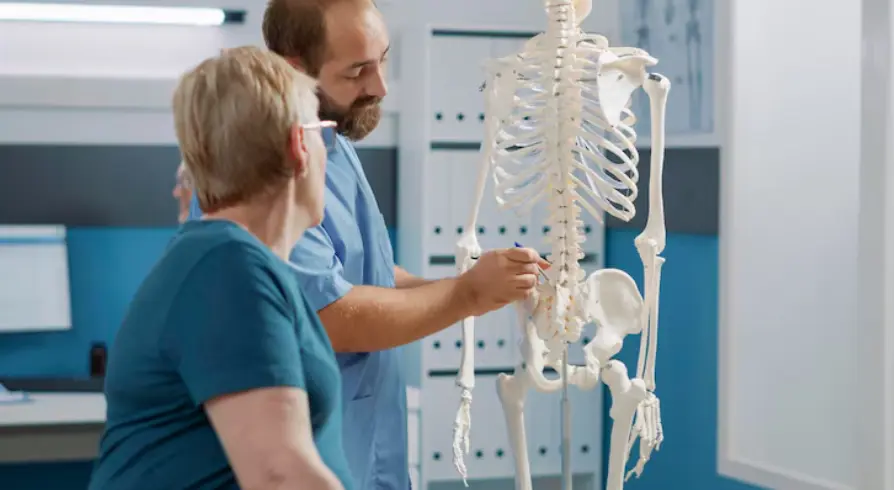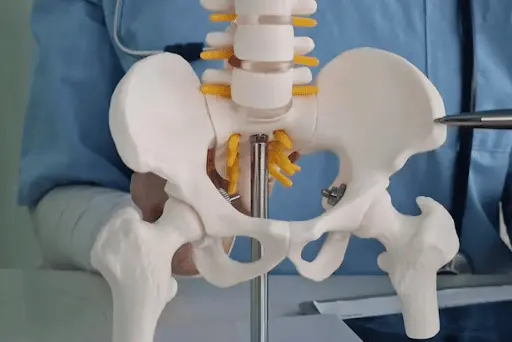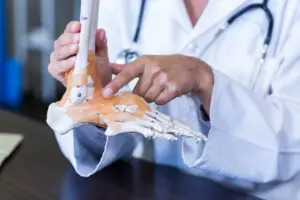Offering expert diagnosis, advanced treatment, and compassionate care for all Total Hip Replacement procedures at VS Hospitals.

Total Hip Replacement (THR) is a surgical procedure aimed at replacing a damaged or worn-out hip joint with an artificial prosthesis. This procedure is commonly performed in patients who suffer from severe arthritis, injury, or other hip joint disorders. The artificial hip, known as a prosthesis, consists of a metal or ceramic ball, a plastic socket, and a stem that fits into the thigh bone.
Total Hip Replacement has become one of the most successful and life-changing surgeries, helping people restore mobility, reduce pain, and regain independence. It is typically recommended when conservative treatments, such as physical therapy or medications, have failed to alleviate symptoms. The procedure improves the patient’s quality of life by providing pain relief, enhanced movement, and the ability to resume daily activities.

Early detection and treatment are crucial for improving the chances of survival. If you notice any concerning symptoms, consult a healthcare provider immediately.

Persistent hip pain that doesn't improve with rest or over-the-counter medications is a primary indicator that the hip joint is severely damaged.

Difficulty in walking, climbing stairs, or getting in and out of a car can be a sign that the hip joint is no longer functioning well.

Limited range of motion or stiffness, particularly after sitting for long periods, can signal hip joint degeneration.

Pain that occurs even when resting or at night is an indication of advanced joint damage.

Swelling or tenderness around the hip, combined with pain, might suggest inflammation or arthritis in the joint.
Hematuria - pink, red, or dark urine, the most common symptom
Feeling the need to urinate frequently, even when bladder is not full
Experiencing pain or burning sensation while urinating
Pain that occurs as the cancer grows and spreads
Significant weight loss not related to diet or exercise
Feeling unusually tired or weak without a clear cause
Smoking is one of the leading causes of bladder cancer. Chemicals in tobacco smoke can damage the lining of the bladder, increasing the risk.

Men are at a higher risk of developing bladder cancer than women.

Conditions such as bladder infections and long-term bladder inflammation can increase the risk.

Prolonged exposure to certain chemicals, especially those used in the dye industry, rubber production, and chemical manufacturing, increases the risk.

The risk increases with age, as the hip joint naturally deteriorates over time.

Osteoarthritis and rheumatoid arthritis are the most common causes of hip joint degeneration.

Past fractures or hip injuries may lead to arthritis or joint damage.

Excess weight increases the pressure on the hip joint, speeding up wear and tear.

A family history of joint problems may increase the risk of hip degeneration.

A lack of regular exercise can weaken muscles and increase stress on the joint.

Conditions such as osteonecrosis (bone death) can cause joint damage and require hip replacement surgery.

Diet and Nutrition
Prevention
Diagnosis
Key Services
Key Facilities
Diet and Nutrition
Proper nutrition plays a crucial role in maintaining bone health and promoting recovery after surgery. Key aspects to consider include:
While some risk factors are unavoidable, there are several ways to prevent or delay the need for a hip replacement:
The process of diagnosing whether Total Hip Replacement is necessary typically involves the following steps:
Based on the results of these tests, the healthcare provider will recommend whether Total Hip Replacement is the best course of action.
In a hospital or clinic that offers Total Hip Replacement surgery, several services are available to ensure the patient’s comfort, safety, and recovery:
Hospitals and clinics that provide Total Hip Replacement should have state-of-the-art facilities to ensure the best outcomes:
Post-Surgery Monitoring: Facilities that ensure proper monitoring for any signs of infection or complications after surgery.
The recovery time for Total Hip Replacement typically ranges from 6 weeks to 6 months. Patients can start walking with assistance within a few days, but full recovery, including regaining strength and mobility, may take several months. Rehabilitation and physical therapy are crucial during this time to achieve the best results.
As with any surgery, Total Hip Replacement carries risks such as infection, blood clots, dislocation, or nerve damage. However, these risks are minimized with proper surgical techniques, preoperative care, and post-operative monitoring. It’s essential to follow your doctor’s advice to reduce the chances of complications.
A hip replacement can last anywhere from 15 to 25 years, depending on factors like the patient’s age, activity level, and the materials used in the prosthesis. Regular follow-up visits are necessary to monitor the condition of the implant and ensure it is functioning well.